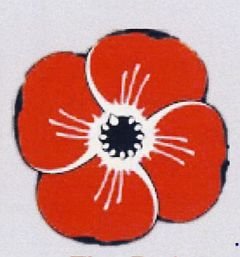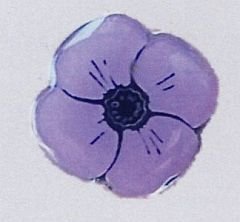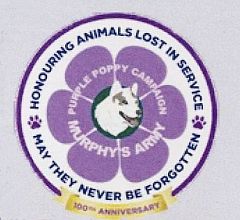

 The South African
The South African
Conflict and war have been around since the creation of man. While heroes received rewards for their service and bravery, those who died were buried and sadly forgotten. Yet, war has always had casualties, some with an identifiable grave and a headstone and others who are commemorated only on a memorial. The Commonwealth War Graves Commission is responsible for maintaining 940 061 graves and 757 832 commemorations on memorials of Commonwealth war casualties, a total of 1 697 893 lives lost in war. To ensure that the casualties of war are not forgotten, the poppy was accepted internationally as the ‘flower of remembrance’ after the First World War. Today, the red poppy remains the symbol of remembrance of the Royal British Legion and the South African Legion of Military Veterans and is used to raise funds for veterans during the annual Poppy Appeal.

As much as conflict and war are man-made, they have also always affected other species. From ancient times, animals have been used in war. Estimates of the number of animals that died in the First World War (1914-1918), range from nine to 16 million. In the UK, a charity known as Animal Aid was established in 1977 as an animal rights organisation. In 2006, it launched the Purple Poppy in remembrance of the animal victims of war, citing that ‘during human conflicts, animals have been used as messengers, for detection, scouting and rescue, as beasts of burden and on the frontline.’ Yet, it became increasingly unhappy with the portrayal of animals as heroic servants of people during the conflict. This was contrary to their aim of campaigning to raise awareness of animals as the victims of human exploitation, whether in wars or in other ways. In 2015, Animal Aid replaced the Purple Poppy with an enamel purple paw badge.

In 2016, the Purple Poppy symbol was picked up by another animal charity in the UK, Murphy's Army, which aims at reuniting lost and stolen pets with their owners. It continues to be used in fund-raising to ensure that the animals who lost their lives in war are never forgotten.
Today, the Purple Poppy is worn alongside the traditional Red and later White poppies, the latter introduced in the 1930s to represent pacifism and to call for the end to war. In addition to Remembrance Day, 11 November, there is a special Purple Poppy Day when the Purple Poppy is to be worn. In 2018, 23 August was chosen as Purple Poppy Day to coincide with the commemoration of the Battle of Mons. This was the date of the first battle between British and German forces on the Western Front during the First World War.
Although not endorsed by The Royal British Legion, which sells only the official red remembrance poppies, the Legion nonetheless acknowledges the other versions of the poppy: ‘We see no conflict in wearing the red poppy next to the purple or white poppy. Many animal rights supporters also support our work. We do ask that the items are not offered alongside each other, however, as this would confuse the public’. Some towns have included purple poppies alongside red ones in official Remembrance displays.

The Purple Poppy emblem as used by Murphy’s Army on
Purple Poppy Day, 23 August 2018.
The South African Legion of Military Veterans has adopted the Purple Poppy and encourages everyone to wear this symbol to help raise awareness of these forgotten victims of war.
With acknowledgement to Wikipedia.
On Saturday, 17 August 2019, a special memorial to animals that died during the Siege of Elands River/ Brakfontein, 4-16 August 1900, and a Wall of Remembrance, will be unveiled at the Elands River Museum. The animals died of exposure to artillery and small arms fire during the fighting. For more information about this event, please contact Peet Coetzee, 0637340936 or John Pennefather, 0828088346, Elands River Animal Monument Committee, hosted by the Greater Marico Heritage Society.
The Siege of Elands River/Brakfontein 4–16 August 1900
During August 1900 the British supply depot at Elands River, consisting of 505 men from Rhodesia, Australia, Britain and Canada, was besieged by a Boer force under General J H de la Rey. At the beginning of the siege, there were 1 540 animals in the camp. From 4 to 10 August, the camp was subjected to artillery and rifle fire and, from 11 to 16 August, rifle fire. The animals in the camp suffered severely. Reverend James Green, who was attached to the 3rd Victorian Bushmen, summed up the fate of those who had no choice but to obey their masters: ‘… out of 1 540 animals – horses, oxen and mules – we had only 211 left, leaving 1 329 either killed or missing.’
Return to Journal Index OR Society's Home page
South African Military History Society / scribe@samilitaryhistory.org